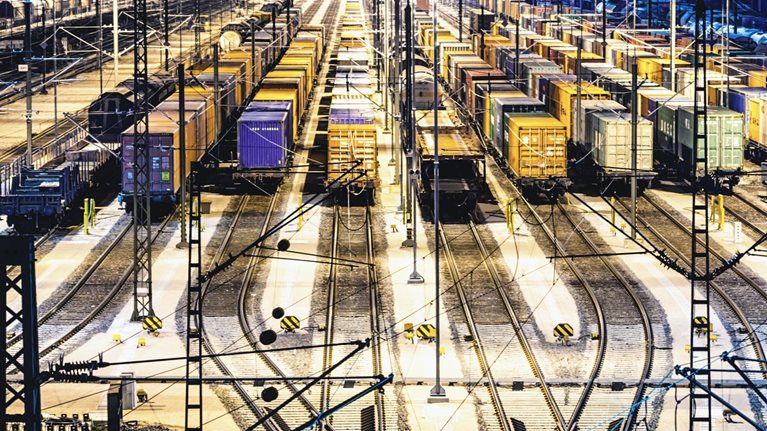In this episode of Inside the Strategy Room, we share an excerpt from a webcast on how companies can change their operations to navigate the vast business challenges heading their way. It was recorded at the 2020 Global Business Leaders Forum, scheduled to take place in New York in early April but instead held virtually. In this session, Martin Hirt, a senior partner and a global co-leader of McKinsey’s Strategy and Corporate Finance practice, offers his insights based the recent articles he co-authored, “Safeguarding our lives and our livelihoods” and “Getting ahead of the next stage of the coronavirus crisis.” This is an edited transcript. You can listen to the episode on Apple Podcasts, Spotify, or Google Podcasts.
Podcast transcript
Martin Hirt: Thank you to all for joining today’s session. We are very conscious that business may not be the only thing on your mind these days. I want to first talk about the uncertainty we are facing right now and how to frame it. Everybody around the world is trying to process the implications of the coronavirus, meaning how to stop the spread through lockdowns, and deal with the health issues. Many of us can use modern technology to reconnect and continue working, but not everybody is so lucky. My colleagues and I believe that if the lockdowns last too long, the impact of the economic shock could be as big as or bigger than what we are experiencing from the virus itself. So, we concluded that we need to look at both: how to stop the virus and how to help the economy emerge without structural damage.
When we look at the shape of the crisis to come, we see two imperatives driving the response. The first one is to safeguard our lives. We need to contain this new pathogen and that means suppressing the virus as fast as possible, flattening the curve. We need to expand the treatment and testing capacity to identify people who have been infected, isolate them and give them the best treatment possible, and that includes raising our healthcare capacity. We also need to find treatments, drugs, and vaccines to cut off the tail of the virus as quickly as possible.
The second imperative is to safeguard our livelihoods, and that means supporting people and businesses immediately affected by the lockdown. Our governments have responded at unprecedented speed and scale. Now we need to figure out how to get back to work safely. The lockdowns, whether they last two weeks or two months, may succeed at suppressing the virus but the virus will still be here. It is very optimistic to presume that vaccines will be available within six to nine months. There will be a period when we have to go back to work while the infection risk is still high. So, one of the most important topics is developing protocols and methods to get us back to work while the virus is still around.
Thirdly, we need to figure out how to steepen the curve of the recovery when we start moving out of the trough of the crisis. Whether a lockdown lasts two months or four months will make the difference between an 8 percent economic shock and a 13 percent decline. This is much more severe than the 2008 global financial crisis and much steeper than the Great Depression of the 1930s.
We have tried to frame the crisis and the economic impact in scenarios that help us make contingency plans (Exhibit 1). On one axis, we have the virus spread and the public health response: what we are doing to battle the virus and how effective these measures are. The optimistic case is rapid and effective control of the virus. Asian countries, whose experience with SARS [severe acute respiratory syndrome] in 2003 helped them prepare for a similar event, have responded very quickly. Initially, Taiwan and Hong Kong were able to stop it within the first few hundred infections but both they and Korea are now experiencing a resurgence.

On the horizontal axis, we have the knock-on effects on our economies. The virus and the health response produce the lockdowns. An economic policy response is what our governments do to cushion the initial blow and then accelerate the recovery. One scenario is highly effective interventions that enable the economy to bounce back. The lockdowns are short enough to not affect the rest of the economy. The second scenario relies on partially effective interventions: the response prevents the worst for many businesses and individuals and the recovery is more U-shaped. Lastly, we could have ineffective interventions, which would result in recovery taking a long time. We believe that countries, depending on their health response and the effectiveness of their stimulus measures, will almost inevitably end up in different places.
The hope lies in innovation. We have already seen innovation pick up at an unprecedented speed. We see things happening in 24 hours that usually take months. People who normally manufacture fans or Formula 1 cars are now developing ventilators and masks. We see companies sharing their ventilators design with the rest of the world. Right now, everybody is experimenting, but at a speed that is very encouraging. Governments are starting to at least temporarily suspend certain regulations with respect to collaboration between competitors in critical sectors to make sure that vaccines and treatments are developed quickly. Companies are able to do things that in normal times would not be allowed to accelerate innovation. This will hopefully help us shorten the time it takes to stop the virus and get back to work.
Time is of the essence. None of us has seen anything like this in our lifetimes. Our response as business leaders therefore should be preparing for something that we have not experienced before. So, what should we do right now, realizing that the number of issues headed our way may be of unprecedented proportions? Remember, we saw the virus coming. It was really a health-crisis reaction in slow motion. It started in January. We looked at it. It moved elsewhere in February. We looked at it. People were still traveling. Only in early March did we begin to take serious measures in the West. Why? Because crises on exponential curves always look harmless in the beginning and then get worse very, very quickly.
We are afraid that something similar is happening on the economic side. To respond, we may have to change how we operate. I have taken a lesson out of the military book. Military organizations are experienced at dealing with super-high-scale crises where the casualty rates in some scenarios are not 2 percent or 4 percent but 75 percent. They have crisis teams. I’m sure you also have crisis teams in your company already. These teams are stabilizing the company’s cash position and balance sheet and making sure it has a diverse supply chain.
However, the military also has something they call plan-ahead teams (Exhibit 2). That team does not deal with the emergency directly. It pulls together information, builds scenarios, devises actions for each scenario, then makes recommendations to the decision makers of the actions to take. It helps the commander to think through all time horizons of the crisis. It’s not the strategy team that sits in the corner somewhere and thinks about what may happen in two years. And it’s not the crisis team handling what’s happening right now. The plan-ahead team plans across all horizons simultaneously.

Let me give you an example. If you are in the US, you may have to decide whether to take a government stimulus package. That seems like an obvious “yes” in a scenario where your business may be threatened during a long-term crisis. That’s what many US companies thought in 2008 and 2009, then many realized the crisis was not as severe for their business and they might not have needed the stimulus. However, by then they were already operating under the very stringent conditions imposed by the stimulus measures. It took some of them a while and a great deal of pain to emerge out of that. This is a real decision and you may have to do a few scenarios to think it through.
Similarly, you should review various scenarios if your suppliers are running out of capacity or your business is going gangbusters right now because you are producing hygiene products or healthcare products. What if a big demand drop-off happens in three months? And on a one- to two-year horizon, what is the return journey? How will your industry change, and what does that mean for what you do right now? One of the most interesting aspects of this crisis will be how many of the changes we are implementing now, such as working remotely, will be reversed. They may become part of the “next normal” that we are steering toward. If we have fewer people go back to offices and more people work from home, that has numerous implications for business models we are running today and for how we configure business opportunities to pursue in the next few years.

COVID-19: Implications for business
So, the key feature of the plan-ahead team is to analyze all time horizons. This team is next door to the CEO and operates in a very close interaction loop, sometimes multiple times a day, to provide updates, reduce the uncertainty for some scenarios, and firm up recommendations. If you look at large-scale crises such as the Deepwater Horizon disaster for BP, the organization had to change the governance quite drastically before it became effective at managing the crisis. The CEO and a select group of management team members were making decisions much faster than usual, with much less alignment in the organization, in order to stay on top of the crisis and get ahead of it. One of the functions of the plan-ahead team is to alleviate pressure on the top executives by bringing them information that is already synthesized and decision ready. The leadership does not have to grapple with gathering information and thinking through the scenarios.
Typically, a very senior executive heads this team full time. In the military, this could be the chief of staff. And these teams are typically staffed not just with strategy people or operations people, but also supply-chain staff, sales and marketing, even specialist teams depending on the issues that come up. That’s another important feature of plan-ahead teams: they are modular. You group them by issue. Initially, you might have just one team with cross-functional staffing. As the number of issues heading your way increases, you may create a dedicated plan-ahead team that, for example, develops scenarios and actions for managing customer relationships. The team’s staffing becomes scalable with the scale of the crisis.
This is what individual organizations need to do. But what about the broader economy? We are obviously in the privileged position of being knowledge workers, so we can take our work home with us. Our primary focus, in terms of getting people back to work, needs to be on those who cannot work from home. They run factories. They run logistics services. They provide services directly to consumers. Many of those people are now at home, and that is one of the reasons why the economic decline has been so steep. These businesses are not experiencing a drop in business of 20 or 30 percent like they did during the financial crisis; some of them are losing 100 percent of their business from one day to the next.
What is of the essence, other than stopping the virus, is getting those people back to work. The main line of thought most people are now pursuing is that this has to come through infection testing. We have to increase our test capacity, so we can identify people who are not infected and can safely work with others. That has to come with protocols. One of the major iPhone makers in China has installed a testing facility in order to support government’s testing. The factory can process up to 20,000 tests a day. The company has a protocol that nobody can enter the factory area without being tested. Now think if that could be implemented in our airports. Assume that you know everybody on a plane has been tested before checking in. Every crew member and maintenance worker has been tested. Therefore, you can safely step onto that plane without the risk of being infected. That gives you a feel for what these protocols could look like. Supermarkets now put tape on the floor to delineate where shoppers can walk so they don’t get too close to employees. Similar things could be done in restaurants.
It will be very much up to us also as business leaders to accelerate the development of these protocols to help run our businesses safely. With that, we can confidently work with local and national authorities to lift the lockdowns in intelligent and cautious ways as quickly as possible. I think the bottleneck right now is getting social acceptance for some of these measures. When you think of some initiatives in China, such as apps that assign individuals scores if they have been in contact with someone infected or are infected themselves, it’s hard to imagine anything like that in Western countries. The protocols might mean restrictions on your ability to leave your house, where a seal is placed on your door and your neighbors monitor whether that seal is broken. In Hong Kong, those who arrive from abroad must wear electronic wristbands for two weeks. When you get home, you have to walk to the corners of your house—that’s your geofence. If you go outside the geofence, the police will come.
Such measures help suppress the virus and get people to a reasonable operating level, but at least for now they are totally unacceptable for many Western societies. Korea and Taiwan have shown that you can achieve similar results with less draconian measures. The big question around stopping the virus’s spread and allowing us to go back to work while the virus is still around is, what protocols can be socially acceptable? Can we change our behavior and accept some of these measures, at least temporarily, to get ahead of this?
Let me leave you with a final example. The daughter of one of my colleagues is a medical student three months from graduation, and she has just been drafted by the Dutch government into service at the front lines of the coronavirus campaign. She has to do six days of triage by phone from home, then for six days work in a tent in front of a hospital triaging patients as they arrive. Then she will work for six days in the ICU. She is a 23-year-old who is in the center of the hot zone, operating relatively safely. She and her colleagues have protective gear. They follow protocols around strict hygiene. If we can send our kids into the hot zone, we should be able to figure out protocols for operating other businesses safely as well.
This presentation was recorded on April 2, 2020. The situation surrounding the novel coronavirus and COVID-19 is evolving daily. For the most current information and insights on the implications of COVID-19 for your business, please visit Coronavirus: Leading through the crisis, a regularly updated collection of McKinsey briefing notes.


